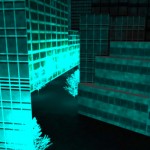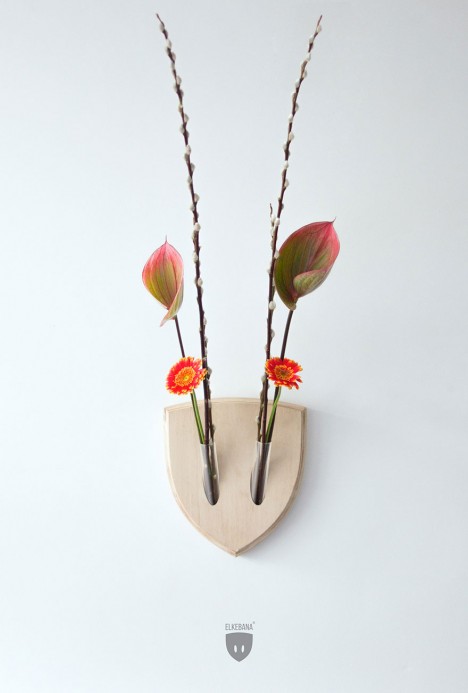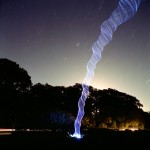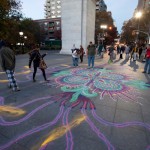
Since its inception, photographers have found weird and wonderful ways to create photographic images in amazing styles and mediums. The first photograph, or more specifically, the earliest known surviving photograph made in a camera, was taken by Joseph Nicéphore Niépce in 1826 or 1827. He used a polished sheet of pewter coated with a thin layer of bitumen, a naturally occurring petroleum tar, which was dissolved in lavender oil, applied to the surface of the pewter and allowed to dry before use.
As cameras developed, the popularity of photography increased and the possibilities of the medium grew, opening new artistic avenues.

We’re a creative bunch, so it’s only natural that as technology progressed into the contemporary climate, advances in office technology such as the printer presented a whole new realm of artistic possibilities. Printers not only allowed for new aesthetics but provided the opportunity for more economical distribution too.
It’s the same with scanners. Modern scanners are considered the successors of early telephotography and fax input devices. The first modern scanner developed for a computer was a drum scanner built in 1957 at the US National Bureau of Standards. Led by a team headed by Russell A. Kirsch, the first image ever scanned on this machine was a 5cm square photograph of Kirsch’s then-three-month-old son, Walden.
Companies such as Acer, Microtek and HP began offering flat-bed scanners in the late 1980s, although hi-res (600 DPI or more), color versions didn’t become popular until the mid-1990s. Once the technology moved into mainstream use, people began experimenting with the flatbed scanner’s artistic potential. What they discovered was a new form of digital photography, called scanography.

Making your own scanography
The process of scanography is as simple as arranging objects on the scanner and capturing the resulting image. But a few extra steps can help refine the process for more successful images.
What you’ll need
- Computer
- Flatbed scanner
- Objects to scan (flat, mailable objects like plants make great subjects)
- Glass cleaner and cloth
- Square of glass approximately A4 in size

For this image, I have combined two scanned images together and included the duct-tape frame that was on the piece of glass I used to compress the branches flush against the scanner bed.
Before you start
Because the scanning surface is made of glass, you’ll have to take care that the bed doesn’t get scratched or cracked. If you are particularly concerned about marking your scanner, try using a layer of glad-wrap as an extra barrier between your objects and the glass. Keep in mind that a scanner bed can only hold so much weight and exceeding this weight will break the scanner.
Method
First, open your flatbed scanner and give it a good wipe-down with glass cleaner and a cloth. This will reduce the amount of dust that will show up in your scanned image. Next, arrange your objects face-down directly on the scanner glass. For a nice, sharp image, I place a layer of glass over the top of my objects so they are flush with the scanner bed.
The depth of field of most scanners is very limited, usually no more than half an inch (12 mm), but the built-in light source provides excellent sharpness, color saturation, and unique shadow effects on objects pressed close to the bed. This is why flat objects like plants produce the most successful scanographic results.

Using a pane of glass will help keep your subject flush with the scanning bed, emphasizing detail. I’ve included the duct-tape border of the glass to create a more dynamic image.
The next step depends on whether you would like a black or white background for your image. For a white background, simply close the scanner lid and activate the scanner. For a black background, leave the lid of the scanner open and activate the scanner in a dark room. Once your scanner has finished processing, observe the results on the computer screen and make any necessary adjustments until you are happy with the finished result.

Post-processing
Once you are happy with your scanned image, open it up in Photoshop for a better look. Photoshop will allow you to remove any pesky dust marks or scratches that appear on your image. Personally, I don’t mind a few imperfections in the capture, as it embraces the quirks of the medium.

Experiment!
Once you have the technique down, the possibilities are endless. Why not try “branching out” and scanning some other objects?

Here are several scanned images of my pet rat that I’ve combined in Photoshop. I think it makes an interesting (and cute) study of movement, detail, and the scanner technology itself.

This creepy wavy effect was done by slightly moving my hands from side-to-side as the scanner arm passed over my fingers.
The post Using Scanography to Create Images of Plants appeared first on Digital Photography School.



































































































You must be logged in to post a comment.